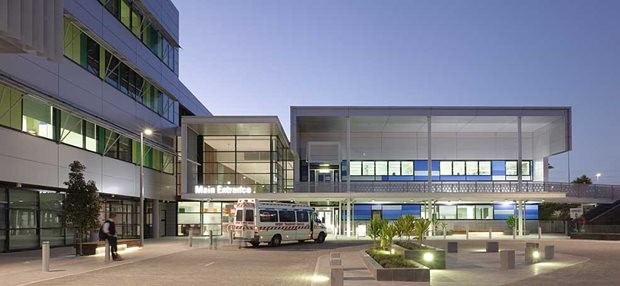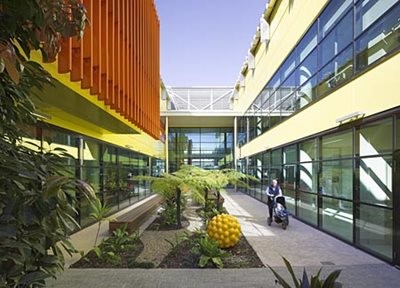Hayley Sainsbury, associate at BVN Donovan Hill, recently won the NAWIC Hutchinson Builders Award for Achievement in Design.
Since graduating from the Queensland University of Technology in 1999, she has gained experience working on a range of projects, from commercial office fit-outs, to major hospitals and through to residential buildings.
Architecture & Design spoke to Sainsbury about female peer support in the industry, winning the NAWIC award and how to bring a team together.
What does it mean to you to win the NAWIC award?
This award has given me individual recognition for my role within the Robina Hospital project team, which is a very special project for me. It has assisted in raising my profile and it has increased my confidence as a designer and in the role of mentoring others.
 Robina Hospital by BVN
Robina Hospital by BVN
Janelle Karrisk said the award demonstrates a commitment to encourage and support female peers. Do you feel there is enough support in the industry as a female, from other females?
Throughout my career I have been fortunate enough to work alongside fantastic female colleagues within our studio and we provide great support and insight for each other. The interior design community in Brisbane is a small industry and predominately female. The industry provides many events and opportunities for us to gather and keep in touch, which maintains a strong network amongst the profession.
You graduated from your degree in 1999. How much do you think has changed in the industry since then?
The industry has matured in many ways. Procurement methods have evolved and therefore our roles on projects has changed considerably. The scale and size of projects has increased, such as PPP bids, hospitals and large campus style workplaces ranging from 10,000 - 50,000 sq metres. Due to the size of these projects they sometimes require collaboration with other architectural studios.
Technology advancement has allowed us to work nationally across projects with greater efficiency and communicating design ideas with clients is easier with 3D programs such as Google SketchUp. Also, documentation and co-ordination with other consultants is now streamlined with the evolution of BIM, facilitating a more rapid exchange of information.
If there is one thing you could change about the industry, what would it be?
The value of design and the value of what the design profession can bring to clients and projects is still a challenging issue in our profession, especially in the current market. Although design has filtered through to many people’s everyday lives we still have a long way to go in educating people about the importance of design and the benefits it can bring.
You have worked on the Robina Hospital. What challenges were involved with that project in terms of the interior?
 We had a large and diverse ‘in-house’ client group. Typically our experience with such large client groups is that when involved in interior design discussions, individuals can tend promote personal preferences, and this project was no exception. In order to reach a solution that everyone was happy with, this required me to challenge individuals’ perceptions (that might be long-held but not soundly based) in a respectful manner.
We had a large and diverse ‘in-house’ client group. Typically our experience with such large client groups is that when involved in interior design discussions, individuals can tend promote personal preferences, and this project was no exception. In order to reach a solution that everyone was happy with, this required me to challenge individuals’ perceptions (that might be long-held but not soundly based) in a respectful manner.
As this was my first major health care project, I adopted an approach of challenging the notion that hospitals are not just about patient care, but they are also workplaces for valued staff. Staff work areas in hospitals can be located in leftover space whilst clinical departments take priority over access to natural light and views. When hospitals expand, these staff office areas are often the first to be relocated, which can result in uninspiring spaces. I constantly challenged this with the client and applied approaches learned from my workplace experience.
This involved a lot of coaching on my part of the client group and staff. It took many presentations to educate them about how workplaces are created outside the health environment and illustrate how features of one type of workplace can have unexpected relevance to another.
If you weren't a designer, what would you be doing?
Making cheese and living on the windy coast of Tasmania, with an art/creative studio on the side - there is still time! However, I do still enjoy being an interior designer and I feel blessed to have found a rewarding career that I am passionate about and I still have much to learn.

